If you hadn’t heard yet, in January, the United States Federal announced that it will be increasing interest rates not one or two but four times in the coming year. Ultimately, this will impact consumer confidence and lead to fewer refinances, given that there will be less attractive interest rates on offer.
Over the past few years, refinancing rates have increased considerably. As a result, property owners saw the opportunity to reduce interest rates on their properties significantly, and investors sought to withdraw capital for reinvestment. But given that interest rates are now starting to climb back upwards, the Mortgage Broker’s Association estimated that 2022 will see a 62% decrease in refinances. Meanwhile, new loan origination is anticipated to increase by 9%, reaching a record high of $1.73 trillion.
With the quickly changing market conditions, the MBA expects that we will see an uptick in non-qualified mortgages, given that brokers will need a new product to focus on. But what is a non-QM? Non-QMs are loans that do not meet the requirements of the Consumer Financial Production Bureau. Therefore, these products cover a huge variety of loans, including those that exceed a 30-year term, loans with negative amortization schedules, and interest-only home loans.
These are loans that don’t fit the cookie-cutter requirements of Freddie Mac and Fannie Mae.
The tightening housing market will further increase the use of non-QM loans. Prices are rising, and conforming loan rate limitations aren’t keeping up. The country is in the midst of what can only be described as a housing crisis, with rents escalating in most major and satellite cities. Due to conditions created by the Covid-19 pandemic, progress on new construction has been and continues to be greatly handicapped. Supply chain issues and a skilled labor shortage mean that new construction simply cannot keep pace with rising demand. As a result, despite increasing interest rates, home prices are projected to continue upwards across most of the country’s major markets.
The average US home loan is now $412,000. Rising home prices will mean that fewer loans will conform but fall under jumbo loans, and many borrowers will have to seek different forms of financing. Jumbo loans make higher-priced homes attainable for borrowers, albeit at the cost of a higher interest rate.
Another contributor to the rise in non-QM loans is the increase of self-employed people in the workforce. The pandemic inspired many previously employed individuals to seek independent work. Self-employed individuals face higher barriers to home loans; therefore, they often seek alternative financing.
Lastly, more individuals are re-deploying recently acquired equity in investment properties. Many loans on investment properties are non-QM as investors often have to get creative with their debt structures to build their portfolios efficiently.
2022 is shaping up as a year where non-QM loans become increasingly popular. If you think that a non-QM loan might be the right product for your property purchase or want to get more information on conforming loans, get in touch with a member of our team to discuss your options.




